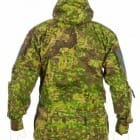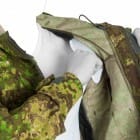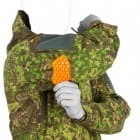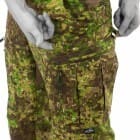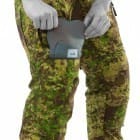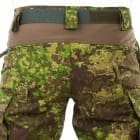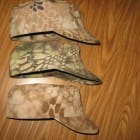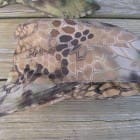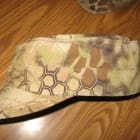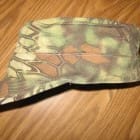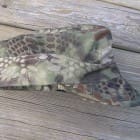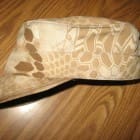UF PRO makes clothing for the Slovenian Army, Customs Service, Prison Service, and Police. Their Sniper System is in use with several law enforcement SWAT / SEK units in Europe, and their Striker Battle Dress System is also in use by Slovenian special forces.
Unveiled at IWA 2013 in March, the Striker Battle Dress System from UF PRO is now available in PenCott-GreenZone camouflage. These are 100% made in Europe to a very high standard of quality, and from the best US and European made materials on the market.
Combat Jacket

The Combat Jacket kind of reminds me of a smock but with a slimmer fit. All pockets are closed with zippers instead of Velcro and the jacket also features inner compartments for safe storage of smaller equipment. It also incorporates side vents.
One cool feature is the UF PRO® air/pac inserts in the shoulder area along with slots for D30 elbow pads.
Combat Pants

Striker Combat Pants are designed for all season wear and feature pockets with closed with zippers instead of Velcro to reduce noise. Additionally, the pants can also be fitted with D30 knee protectors for reactive impact protection. Loops in the upper leg allow the pre-placement of a tourniquet for high-risk missions. In addition to stretch panels for mobility and comfort, the pants can also be fitted with an optional WINDSTOPPER lining that provides comfort in temperatures ranging down to -5°C.
In addition to what you see here, look for the Combat Shirts to be available after the 15th. The full range consists of a combat shirt, combat pants, combat jacket, rain suit and softshell jacket. Additionally, UF PRO will offer their Boonie Hats in PenCott. If that isn’t enough, they will also be donating some sets of the Striker Battle Dress System in BadLands to the Silent Heroes Foundation Special Interdiction Unit fighting rhino poaching in South Africa which I think is a great cause.
The UF PRO Striker Battle Dress System Combat Jacket and Combat Pants can be ordered directly through ufpro.si.





